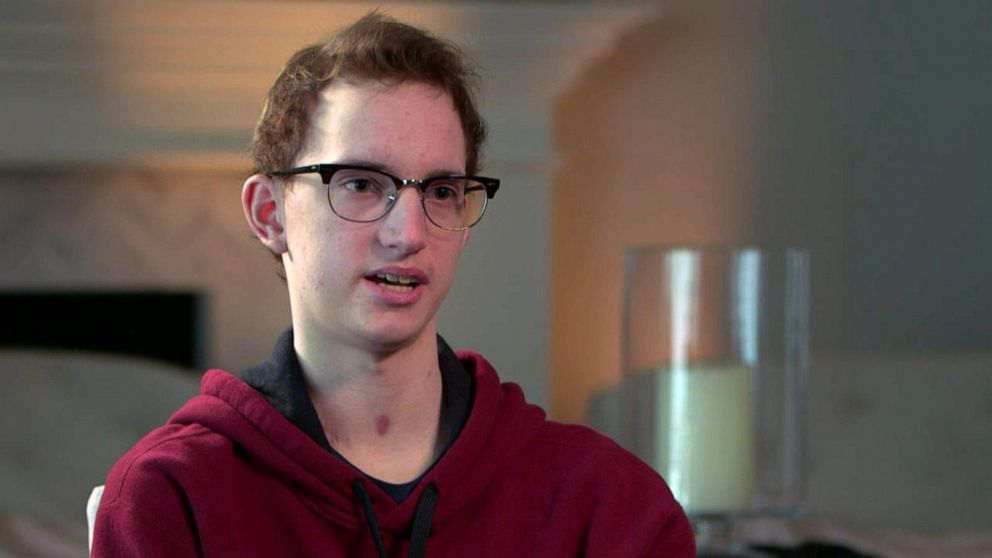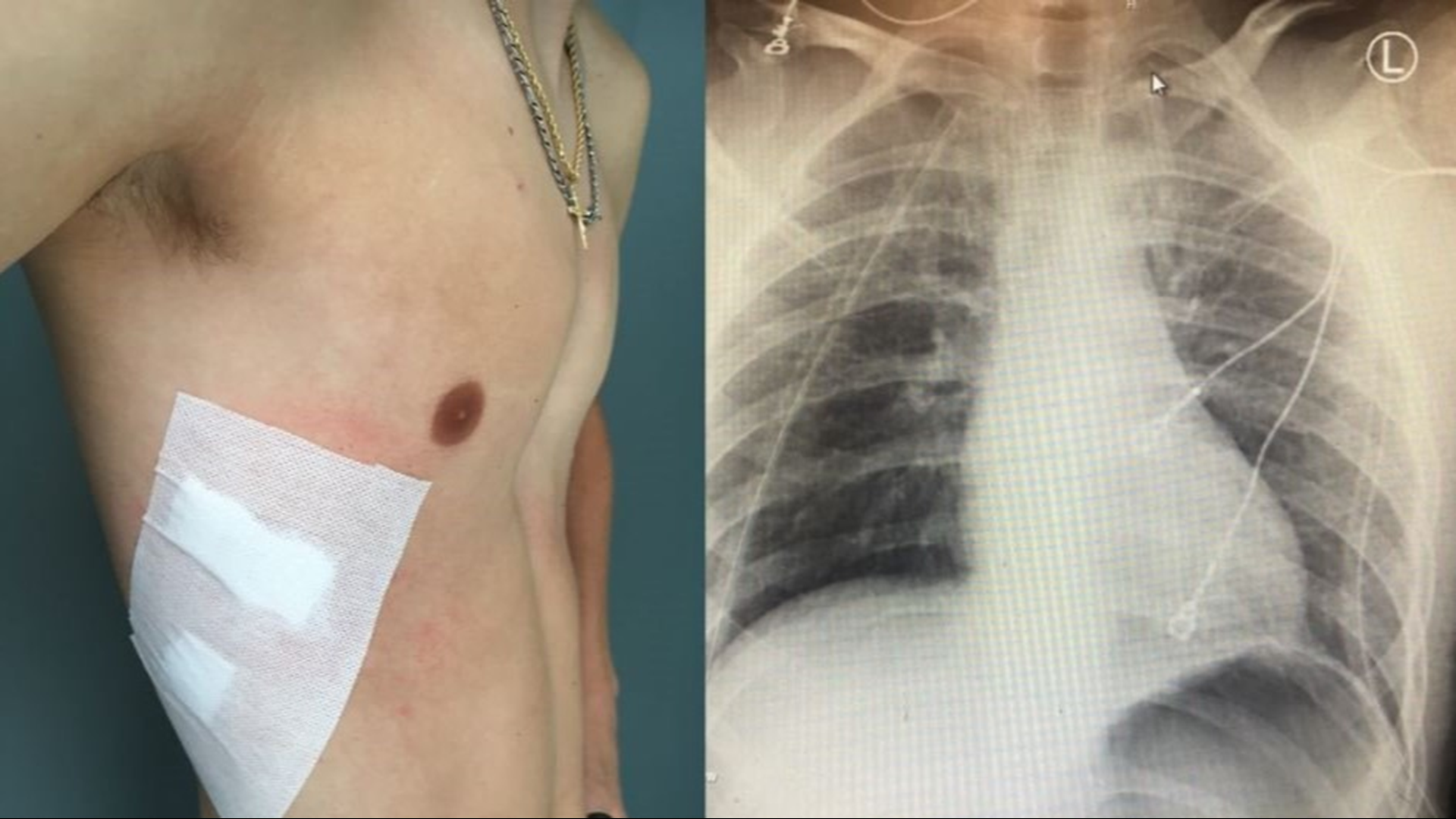Understanding The Rare Case Of 17-Year-Old Lung Burst: Causes, Symptoms, And Treatment
Imagine a situation where a seemingly healthy 17-year-old experiences a sudden and alarming medical emergency known as a lung burst. This rare but life-threatening condition can leave parents, caregivers, and even medical professionals in shock. Understanding what causes a lung burst, its symptoms, and the treatment options available is crucial for anyone concerned about their respiratory health.
The term "17-year-old lung burst" refers to a specific medical condition where the lung collapses due to air leaking into the space between the lung and chest wall. This condition, also known as a spontaneous pneumothorax, often affects young individuals, particularly those in their teens and early twenties. It is essential to recognize the signs early to prevent complications.
In this article, we will delve into the complexities of this condition, exploring its causes, symptoms, diagnosis, and treatment. By the end, you will have a comprehensive understanding of what happens when a lung bursts and how it can be managed effectively.
- Cameron Dallas Cameron Dallas
- Mori Lee Wedding Dresses
- Drew Carey In The Marine Corps
- The Big Bang Theory Tv Show
- Capricorn And Scorpio Compatible
Table of Contents
- What is a Lung Burst?
- Causes of Lung Burst
- Symptoms of Lung Burst
- Diagnosis of Lung Burst
- Treatment Options
- Prevention Strategies
- Complications of Lung Burst
- Recovery Process
- Long-Term Effects
- Conclusion
What is a Lung Burst?
A lung burst, or more accurately referred to as a pneumothorax, occurs when air leaks into the space between the lung and the chest wall, causing the lung to collapse. This condition can affect anyone, but it is more common in young adults, particularly males. For a 17-year-old, this can be a frightening experience, as it often happens without warning.
Types of Lung Burst
There are two primary types of pneumothorax:
- Spontaneous Pneumothorax: This occurs without any apparent trauma or injury. It is often seen in tall, thin young adults.
- Traumatic Pneumothorax: This results from external injury, such as a car accident or stab wound.
Understanding the type of lung burst is crucial for determining the appropriate treatment plan.
- Who Is Dating Meghan Trainor
- Why Didnt Gypsy Just Run Away
- What Ethnicity Is Vanessa Bryant
- Obama And Jennifer Aniston
- What Happened To Cheryl Burke
Causes of Lung Burst
Several factors can contribute to a lung burst in a 17-year-old. While some cases are idiopathic (without a known cause), others may have identifiable triggers.
Primary Causes
- Underlying Lung Conditions: Conditions like asthma, cystic fibrosis, or emphysema can increase the risk of a lung burst.
- Genetic Factors: Some individuals may inherit a predisposition to lung conditions that make them more susceptible to pneumothorax.
- Smoking: Smoking is a significant risk factor, even in young people, as it weakens lung tissue.
By identifying these causes, healthcare providers can develop personalized prevention strategies for at-risk individuals.
Symptoms of Lung Burst
The symptoms of a lung burst can vary depending on the severity of the condition. For a 17-year-old, recognizing these symptoms early can make a significant difference in outcomes.
Common Symptoms
- Sudden chest pain
- Shortness of breath
- Rapid breathing
- Coughing
- Tiredness
If any of these symptoms occur, it is crucial to seek immediate medical attention. Early intervention can prevent the condition from worsening.
Diagnosis of Lung Burst
Diagnosing a lung burst involves a combination of physical examination, imaging tests, and medical history review. For a 17-year-old experiencing these symptoms, a prompt diagnosis is essential.
Diagnostic Procedures
- Chest X-ray: This is the most common imaging test used to confirm a pneumothorax.
- CT Scan: In more complex cases, a CT scan may be necessary for a more detailed view.
- Pulse Oximetry: This test measures the oxygen level in the blood, helping to assess the severity of the condition.
Accurate diagnosis ensures that the appropriate treatment can be administered promptly.
Treatment Options
Treatment for a lung burst depends on the severity of the condition and the underlying cause. For a 17-year-old, treatment options may include:
Non-Invasive Treatments
- Oxygen Therapy: Administering oxygen can help the body reabsorb the air in the chest cavity.
- Observation: In mild cases, the patient may only require close monitoring.
Invasive Treatments
- Chest Tube Insertion: A chest tube may be inserted to remove air from the chest cavity.
- Surgery: In severe or recurrent cases, surgery may be necessary to repair the lung.
Each treatment option is tailored to the individual's needs, ensuring the best possible outcome.
Prevention Strategies
While not all cases of lung burst can be prevented, there are steps a 17-year-old can take to reduce their risk:
- Avoid smoking
- Maintain a healthy lifestyle
- Manage underlying health conditions
- Seek regular medical check-ups
By adopting these strategies, young individuals can significantly lower their chances of experiencing a lung burst.
Complications of Lung Burst
If left untreated, a lung burst can lead to serious complications. For a 17-year-old, understanding these potential complications is vital for making informed decisions about their health.
Possible Complications
- Tension pneumothorax
- Recurrent pneumothorax
- Respiratory failure
Recognizing and addressing these complications early can prevent long-term damage to the lungs.
Recovery Process
The recovery process for a lung burst varies depending on the severity of the condition and the treatment received. For a 17-year-old, recovery may involve:
- Rest and limited physical activity
- Regular follow-up appointments
- Adherence to prescribed medications
Following these guidelines ensures a smooth recovery and reduces the risk of recurrence.
Long-Term Effects
In some cases, a lung burst can have long-term effects on a person's health. For a 17-year-old, these effects may include:
- Chronic lung conditions
- Increased risk of recurrence
- Emotional and psychological impact
By staying informed and proactive, young individuals can manage these effects and maintain their overall well-being.
Conclusion
In conclusion, understanding the condition of a lung burst, particularly in a 17-year-old, is essential for ensuring timely diagnosis and treatment. Recognizing the symptoms, knowing the causes, and following prevention strategies can significantly reduce the risk of this life-threatening condition.
We encourage readers to share this article with others who may benefit from the information. If you or someone you know has experienced a lung burst, leave a comment below sharing your story. Together, we can raise awareness and promote better respiratory health for everyone.
Article Recommendations
- Who Won American Idol
- Mr Cee Cause Of Death
- Capricorn And Scorpio Compatible
- Who Is Dating Meghan Trainor
- 20th Of January Star Sign



Detail Author:
- Name : Adolphus Murazik
- Username : heloise82
- Email : cathy18@yahoo.com
- Birthdate : 1985-06-25
- Address : 1138 Gottlieb Station Lake Henrietteburgh, NY 81961
- Phone : 1-445-819-1558
- Company : Tillman Group
- Job : Life Science Technician
- Bio : Quisquam illum architecto quos ratione ut provident. Nobis recusandae quae et voluptates ea vel. Totam libero consequatur fugiat qui laborum adipisci. Voluptatem sint eum magni.
Socials
twitter:
- url : https://twitter.com/skub
- username : skub
- bio : Iusto beatae quasi nobis eaque porro. Sequi placeat odit commodi aperiam. Dolores maxime asperiores quis iure ut officia.
- followers : 2898
- following : 1116
tiktok:
- url : https://tiktok.com/@sandy_kub
- username : sandy_kub
- bio : Eligendi sunt veritatis occaecati nam et nisi. Dolor sunt est quia placeat.
- followers : 3322
- following : 1138
facebook:
- url : https://facebook.com/sandy8875
- username : sandy8875
- bio : Eos quasi enim optio voluptas consequatur.
- followers : 6328
- following : 2300
instagram:
- url : https://instagram.com/skub
- username : skub
- bio : Dolor sed omnis aut quia. Eum ut nihil nihil mollitia quod.
- followers : 2230
- following : 2222
linkedin:
- url : https://linkedin.com/in/sandy267
- username : sandy267
- bio : Omnis at alias ipsa rerum explicabo rerum.
- followers : 1225
- following : 86